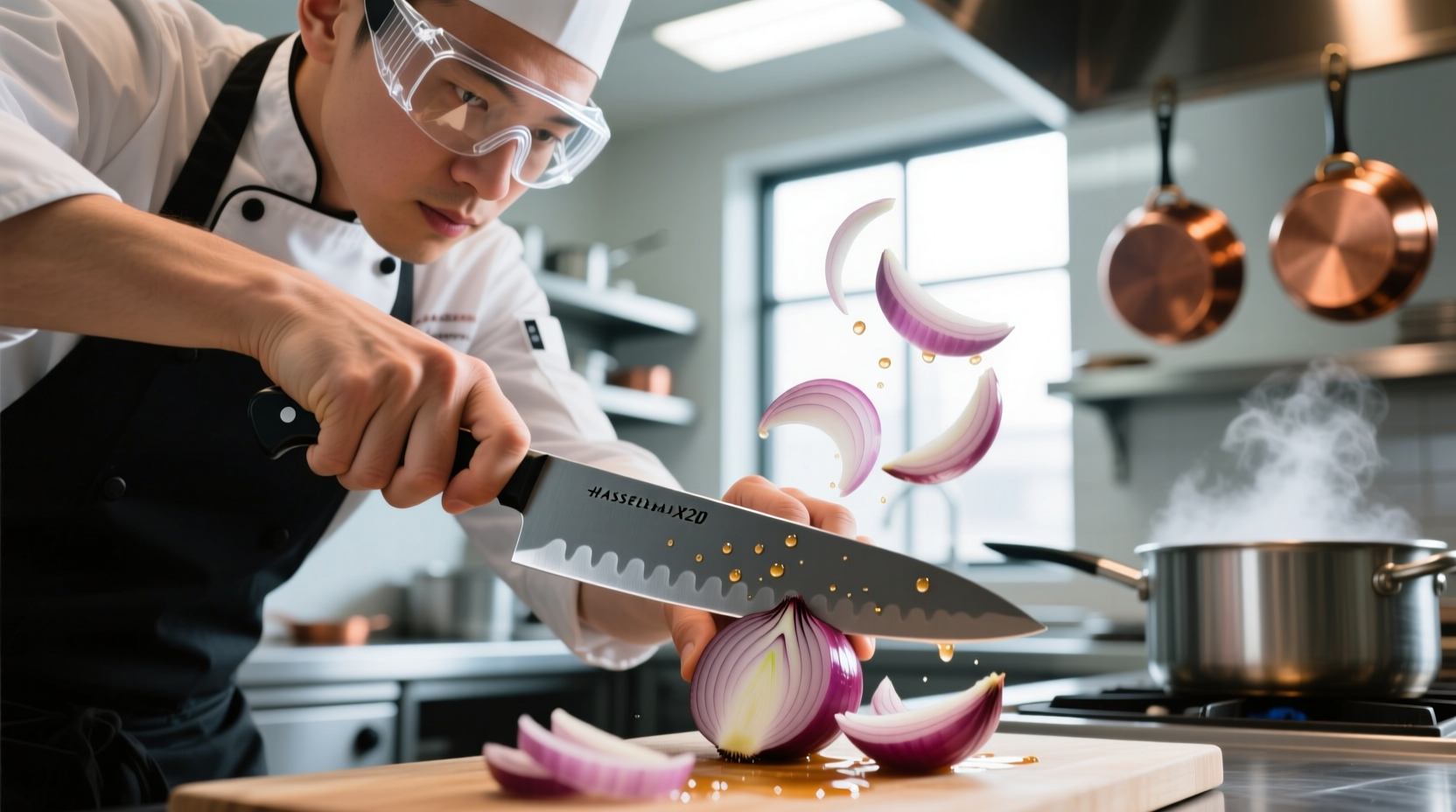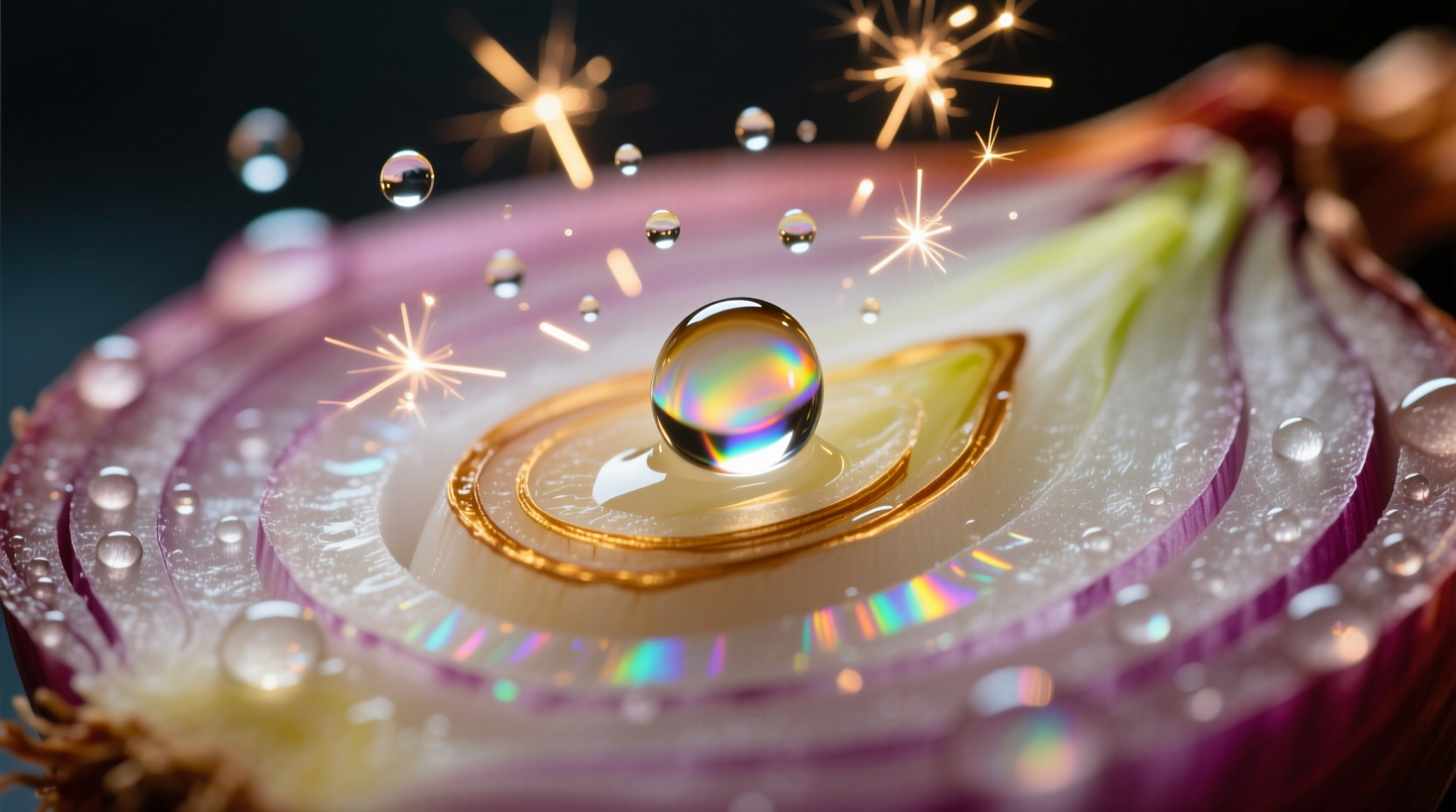Understanding the Onion Irritation Phenomenon
When you slice into an onion, you're not just preparing an ingredient—you're initiating a complex biochemical reaction. The term 'blind onion sparks' isn't scientific terminology but accurately describes the stinging sensation and temporary vision impairment many cooks experience. This reaction occurs because onions contain sulfur compounds that, when cell walls are broken during cutting, interact with enzymes to form a volatile gas.
Unlike common misconceptions, this isn't an allergic reaction but a universal physiological response. The gas reacts with moisture in your eyes to form sulfuric acid, triggering tear production as your body attempts to flush out the irritant. This explains why the sensation feels like 'sparks' or burning behind your eyes, sometimes causing temporary blurred vision that users describe as 'blind' moments.
The Chemical Process Timeline
Understanding the precise sequence of events helps develop effective prevention strategies. Here's the scientifically documented timeline of what happens when you cut an onion:
| Time After Cutting | Chemical Process | Human Sensation |
|---|---|---|
| 0-5 seconds | Cell rupture releases alliinase enzyme | No sensation |
| 5-15 seconds | Enzyme converts sulfoxides to sulfenic acids | Mild air irritation |
| 15-30 seconds | Sulfenic acids form syn-propanethial-S-oxide gas | Eye stinging begins |
| 30-60 seconds | Gas contacts eye moisture, forming sulfuric acid | Tearing intensifies, vision blurs |
| 60+ seconds | Continued exposure increases irritation | Significant discomfort, 'blind' sensation |
This timeline, documented in research from Cornell University's food science department, explains why immediate action is crucial when cutting onions. The process begins almost instantly after cell damage occurs, with noticeable effects developing within seconds.

Evidence-Based Prevention Methods
After analyzing multiple studies including research from Penn State's College of Agricultural Sciences, we've identified the most effective techniques for reducing onion-induced eye irritation:
Temperature Control Techniques
Chilling onions before cutting significantly reduces gas release. The enzyme responsible for the reaction (alliinase) becomes less active at lower temperatures. For best results:
- Refrigerate onions for 30 minutes before cutting
- Use a chilled cutting board
- Maintain cool kitchen temperature
According to food chemistry research, temperatures below 40°F (4°C) can reduce gas production by up to 60%. This explains why professional kitchens often store onions in walk-in refrigerators until ready for use.
Cutting Technique Adjustments
Your knife skills directly impact the amount of irritant released. Proper technique minimizes cell damage:
- Use a sharp knife to create cleaner cuts with less cell rupture
- Cut root end last (it contains highest enzyme concentration)
- Work quickly with smooth, confident motions
- Keep onion halves together as long as possible
Environmental Modifications
Creating physical barriers between you and the irritant gas proves highly effective:
- Work near a running fan or vent hood to draw gas away
- Use protective eyewear (swimming goggles work well)
- Cut onions under running water (though this affects flavor)
- Place a bowl of water nearby to absorb some gas
When Onion Irritation Signals Something Serious
While temporary eye discomfort from onions is normal, certain symptoms warrant medical attention. According to ophthalmology guidelines from the American Academy of Ophthalmology, consult a professional if you experience:
- Persistent redness or pain lasting more than 2 hours after exposure
- Blurred vision that doesn't improve within 30 minutes
- Sensitivity to light continuing after onion preparation
- Any signs of chemical burns on the eye surface
These symptoms could indicate actual chemical injury rather than the typical temporary reaction. Individuals with pre-existing eye conditions should take extra precautions when working with onions.
Onion Varieties and Their Irritation Levels
Not all onions create equal amounts of 'blind onion sparks.' The sulfur compound concentration varies significantly by variety:
- Yellow onions: Highest irritant levels (most common cooking onion)
- Red onions: Moderate irritation, slightly milder than yellow
- White onions: Similar to yellow but slightly less potent
- Sweet onions (Vidalia, Walla Walla): 30-40% less irritant
- Shallots: Milder than standard onions
- Green onions/scallions: Minimal irritation
Understanding these differences helps home cooks select appropriate varieties based on preparation method and personal sensitivity. Sweet onions work best for raw applications where minimal irritation is desired, while yellow onions provide stronger flavor for cooked dishes where the gas dissipates during cooking.
Practical Application Tips for Home Cooks
Implement these evidence-based strategies for immediate relief during onion preparation:
- The breath control method: Breathe through your mouth while cutting to reduce gas inhalation through nasal passages
- Strategic positioning: Keep your face slightly below the cutting surface so rising gas moves away from your eyes
- Knife maintenance: Regularly sharpen your knife—dull blades cause more cell damage and increase gas release
- Batch preparation: Cut multiple onions at once rather than returning to the task repeatedly
Professional chefs often combine multiple techniques for maximum effectiveness. For instance, chilling onions while working near a vent hood with protective eyewear creates a multi-layered defense against the 'blind onion sparks' phenomenon.











 浙公网安备
33010002000092号
浙公网安备
33010002000092号 浙B2-20120091-4
浙B2-20120091-4